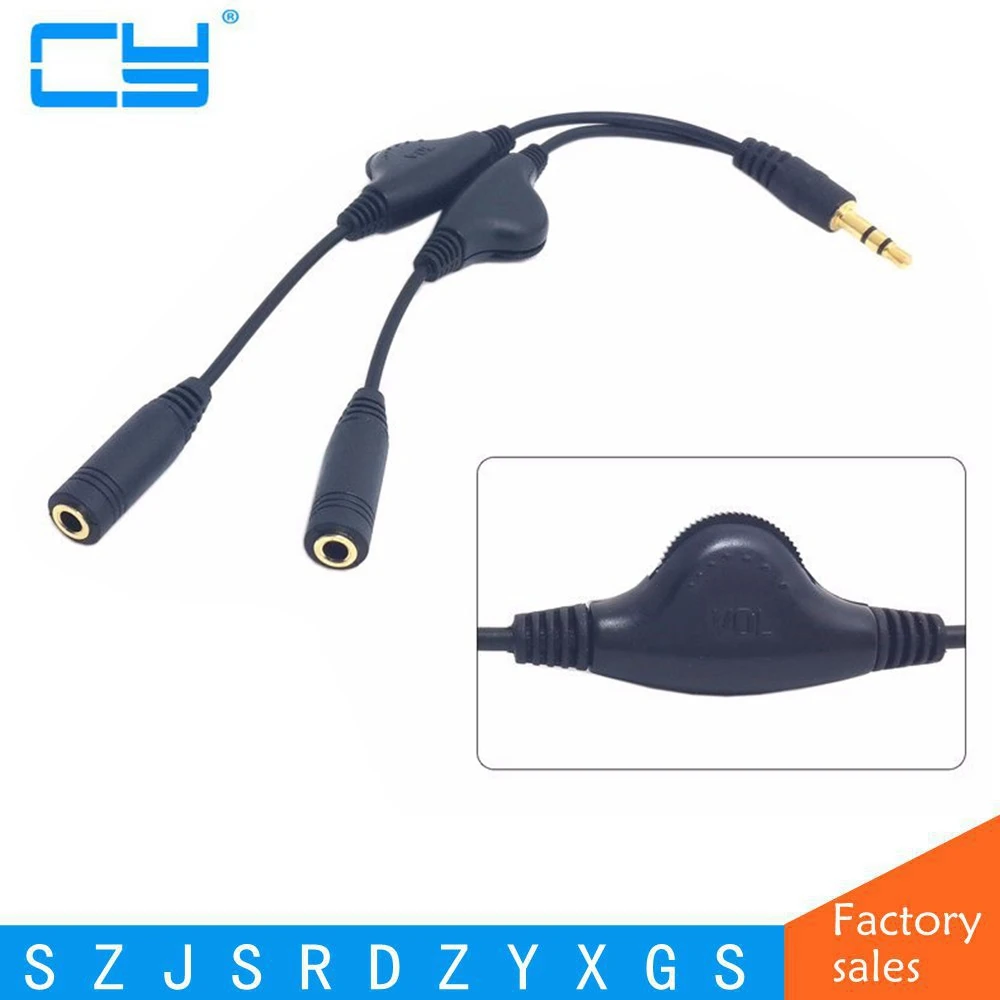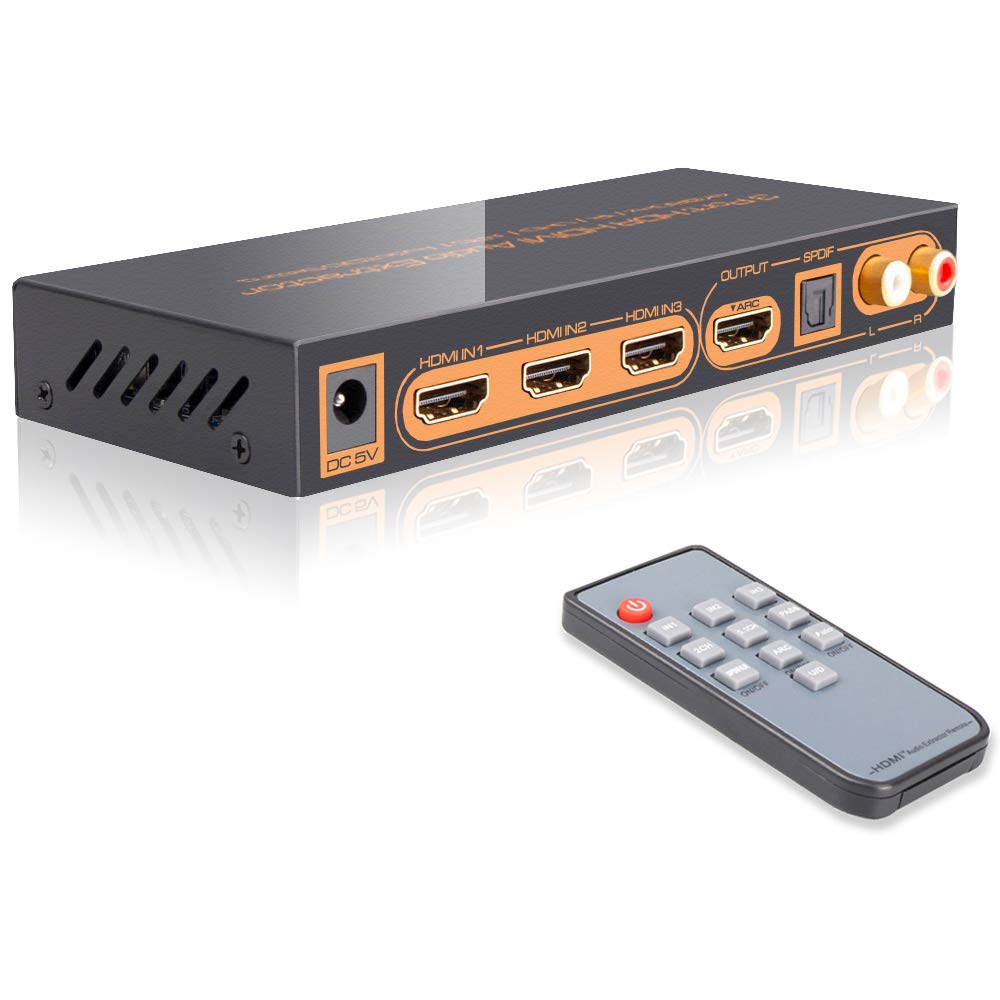

- #AUDIO SPLITTER WITH VOLUME CONTROL AND ON OFF BUTTON FOR PC MOVIE#
- #AUDIO SPLITTER WITH VOLUME CONTROL AND ON OFF BUTTON FOR PC DRIVERS#
- #AUDIO SPLITTER WITH VOLUME CONTROL AND ON OFF BUTTON FOR PC PLUS#
- #AUDIO SPLITTER WITH VOLUME CONTROL AND ON OFF BUTTON FOR PC WINDOWS#
Obviously this means I'll have some(50%) preamp loss.
#AUDIO SPLITTER WITH VOLUME CONTROL AND ON OFF BUTTON FOR PC WINDOWS#
Windows thinks it's sending audio to a single speaker system. So I'm splitting my 5.1ch stereo out into 2 separate speaker systems. Windows will not factor in preamp loss on splitting outputs, which means you'd be messing with volume levels just to save yourself the cost of 1 splitter.
#AUDIO SPLITTER WITH VOLUME CONTROL AND ON OFF BUTTON FOR PC PLUS#
But how do I connect the analog receiver to the stereo jacks, which are already in use by the old speakers?ģ Stereo splitters, plus 3 Stereo-RCA adapters, plus 3 RCA cables.Įven if you have an extra stereo out for headphones, do not use it in this type of setup. Sacrificing the digital out (which gets converted to analog at some point before it reaches your ear anyway) and sticking with analogs allows you to trick Windows into thinking it's only sending audio to one device.
#AUDIO SPLITTER WITH VOLUME CONTROL AND ON OFF BUTTON FOR PC MOVIE#
I want to watch a movie in 5.1 surround, and I want it to come out of both sets of speakers, without using surround simulation on either set. This means that Windows is seeing the S/PDIF optical out and my regular 5.1ch stereo outs as separate devices. Old speakers are connected with stereo cables. The new speakers are connected to the sound board with an S/PDIF cable. In this case both speaker systems are 5.1 channel surround, and both have some form of surround simulation built-in for stereo sources. My old speakers take a direct stereo cable connection from the motherboard to their inputs. You'll have a much easier time getting rid of that and simply splitting your motherboard's outputs with cables you can buy from any large electronics store.įor example: I just upgraded to a Digital Receiver with an option to have either S/PDIF or RCA inputs going to my new speakers. Your USB device sounds like it didn't work out the way you wanted it to when you purchased it. WINDOWS may not be able to split audio between two output devices, but YOU have the power to split it as many times as you want. What you're trying to do might require you to get a bit more physical. Using this feature, you also get two volume control bars, which is handy, if you want to set "normal" volume different on the headset vs speakers, something you cannot two with a hardware splitter, which is the approach I used previously: Below screenshots explain how I did it (click to zoom): For recording, I wanted to use my Logitech headphones as well.

I found these instructions in this video:įor my case, I needed to play simultaneously through my speakers connected via 3.5mm jack and also via my Logitech headphones. This way you can continue using your microphone to record sound.

You don't need to set your other device as default, it will still work. Go to Sound -> Playback, set your primary device as default, then go to Recording tab, find Stereo Mix device (you may need to enable it and/or show disabled devices first), go to Properties -> Listen, check Listen to this device and select Playback through this device to be your other output device. Some programs can be fooled into playing onto another output device by switching the default device after you've hit play.
#AUDIO SPLITTER WITH VOLUME CONTROL AND ON OFF BUTTON FOR PC DRIVERS#
VLC, switch to Advanced and look under the Audio tree.Īs long as your Audio drivers are updated and the Application supports it, then you are good to go. In MPC, it's an obscure listbox on the bottom of the Output options. Media Player Classic along with VLC also support this feature, again, which was available since Vista. Now you have Youtube through the Back connections and an MP3 going on the front headphones. Doubleclick the speakers and switch the output to, say from Back Speakers to Front Headphones.

Go to Tool, Options, then click on the Devices Tab. Windows does support multi streaming audio.įor a hands on example, play something on Youtube.


 0 kommentar(er)
0 kommentar(er)
